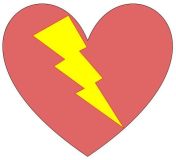What is heart valve disease?
What is heart valve disease?
Our heart has four chambers, two upper and two lower. Two major blood vessels arise from the lower chambers. There are four heart valves which regulate blood flow from the upper chambers to the lower chambers and from the lower chambers to the major blood vessels. Function of the valves is to prevent back flow of blood so that forward circulation of blood can be maintained. These heart valves can occasionally be abnormal at birth or become abnormal later due to disease processes. This is known as heart valve disease.

Symptoms and signs will depend on which valve or valves are actually abnormal. It will also depend on the type of abnormality in the valve, whether it is narrowed or leaky or both. Sometimes more than one valve can be abnormal in the same person. Then the symptoms and signs will be a combination of those for the involved valves. Disease of one valve may also modify the function of other valves later on.
The upper chambers of the heart are right atrium and left atrium. Blood returning from the body after oxygen extraction reaches the right atrium. From the right atrium, the blood flows to the right ventricle, the lower right sided chamber. The opening between the right atrium and right ventricle is guarded by the tricuspid valve. Right ventricle pumps blood to the lungs for oxygenation, through the pulmonary artery. ‘Pulmonary’ means in relation to the lungs. The opening from the right ventricle to the pulmonary artery is guarded by the pulmonary valve.
Blood returns from the lungs after oxygenation, to the left atrium through the pulmonary veins. From the left atrium it passes to the left ventricle, the lower chamber, through the mitral valve. Left ventricle pumps blood to the aorta, through the aortic valve. Aorta takes the oxygenated blood to the whole body.
One important disease, seen especially in the developing countries, known as rheumatic fever, is a major cause of heart valve disease. Rheumatic fever affects major joints of the body as well as the heart valves. Though the joint symptoms recover quickly, the damage to the heart valve may progress lifelong. It is often said that rheumatic fever ‘licks the joints and bites the heart’. Left sided heart valves are more commonly involved in rheumatic fever, of which mitral valve is involved most often.
Right sided valves can be involved either directly by rheumatic fever or secondary to increased pressure in the blood vessels of the lungs. When left sided valves are damaged, back pressure transmitted to the lungs can increase blood pressure in the lungs, which can sometimes be progressive. Too high pressures in the blood vessels of the lungs, known as pulmonary hypertension, makes the right sided valves leaky. Right sided valves are usually not used to such high pressures.
The population is aging globally, so that aging heart valves also get damaged. Degenerative changes are an important cause of heart valve disease, especially in the elderly. This mechanism of heart valve disease is becoming more frequent these days as persons survive longer.
Birth defects can involve any of the valves. Those with severe damage and with other associated severe birth defects of the heart may not survive long. So heart valve disease as a birth defect is often seen as mild varieties. Commonest variety is a bicuspid aortic valve. Normal aortic valve has three semilunar leaflets. In bicuspid aortic valve, there are only two leaflets. Very rarely, aortic valve can have just one leaflet and occasionally four leaflets instead of three. Other heart valves may also have birth defects, which are usually detected in childhood.
Another rare disease which involves mostly the right sided heart valves is carcinoid heart disease which occurs as a result of damage from the secretions of a type of tumour known as carcinoid tumour. Carcinoid tumour usually occurs in relation to the intestine, but can also occur in the lungs. Right sided heart valves, namely tricuspid and pulmonary are involved when the tumour has spread to the liver. Tumour in the lungs can cause damage to the left sided heart valves, mitral and aortic, which is much rarer.
In individuals who have injectable drugs abuse, right sided heart valves, mostly tricuspid valve, can get infected due to the poor precautions taken during injections. The tricuspid valve may develop severe leak and the infection can spread to the lungs as well.
Some genetic disorders like Marfan syndrome and Ehlers Danlos syndrome, in which the connective tissue of the body is defective, heart valves can also be defective. Aortic and mitral valves are most often affected in these conditions as they face higher pressure loads during normal operation.
Mitral valve prolapse is a related disorder in which the mitral valve is bulky and redundant. It bends back into the upper chamber, left atrium, when the left ventricle contracts. This produces a leak which can increase over time, producing enlargement of left upper and lower chambers of the heart.
Heart valves can also get damaged in those with a heart attack. It is usually the mitral valve which is involved. When the left ventricle contracts, string like structures from the tip of the mitral valve hold back the valve from everting back into the upper chamber. These structures are attached to a portion of the heart muscle known as papillary muscle. When the left ventricle is damaged due to a heart attack as a result of blockage of its blood vessel, the function of these muscles are also affected. This leads to eversion of the mitral valve leaflets when the left ventricle contracts and leakage of blood back into the left atrium.



